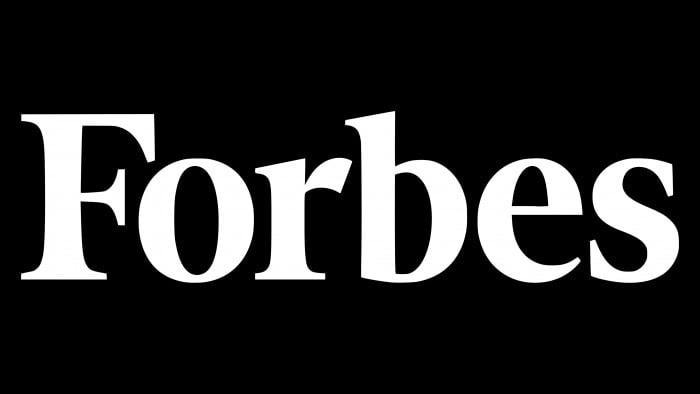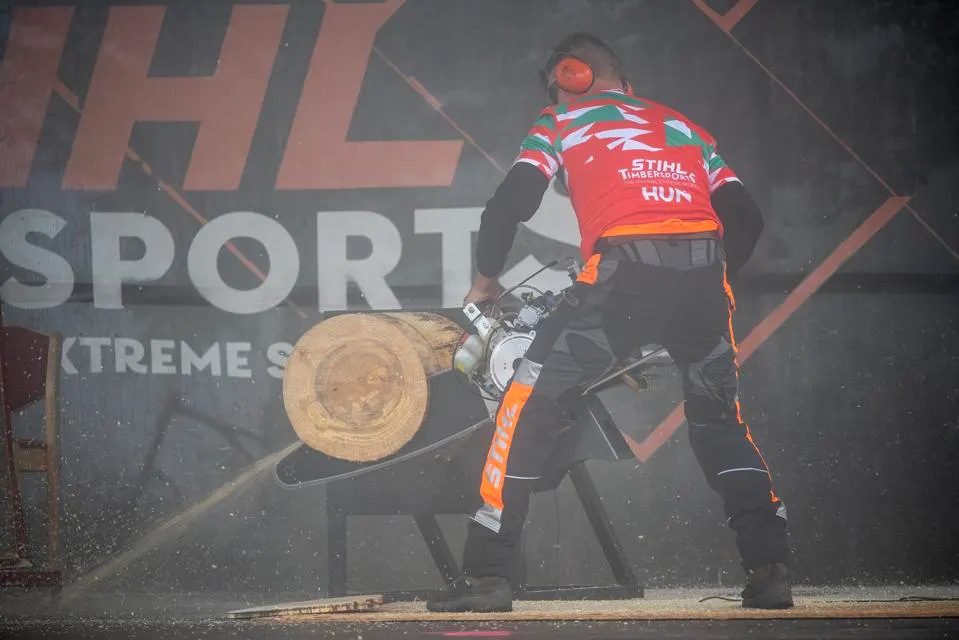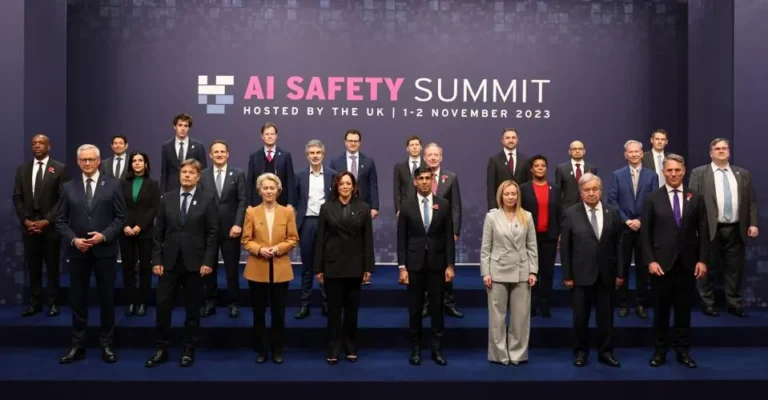Dean DeBiase is a best-selling author and Forbes Contributor reporting on how global leaders and CEOs are rebooting everything from growth, innovation, and technology to talent, culture, competitiveness, and governance across industries and societies.

Chainsaw Leadership: Carving Out And Owning Competitive Growth Markets

By Dean DeBiase
November 4th, 2024
As elections, economic cycles, and trends impact global businesses more frequently, few companies manage to remain competitive and relevant over time in this fast-paced, tech-driven world. Take the global tools market as an example, which is projected to grow to $153 billion by 2032 according to Allied Market Research. This growth is fueled by increasing construction activity, a surge in home renovations, the rising popularity of DIY culture and the expansion of small-scale industries.
With no shortage of competitiveness in this sector, a standout in this evolving landscape is one of the world’s largest family-owned companies, STIHL, that sells into both professional and consumer sectors. I recently met with the company’s chairman to understand what CxO’s in other industries could learn from them on growth, innovation and competitiveness—and playing the long game.
With a global network of 55,000 dealers, 20,000 employees and over $5 billion in revenue in 2023, the company has led the outdoor power equipment industry for nearly a century. I learned that they are continuously adapting and balancing tradition and culture with innovation, with perspectives that may provide a model for how companies can successfully navigate change while staying true to their core values.
Embrace Innovation Without Abandoning Tradition
Founded in 1926 by Andreas Stihl, STIHL began its journey with the invention of the modern chainsaw, a revolutionary tool that transformed the forestry industry. Today, the company is a global leader in outdoor power equipment and the world’s best-selling chainsaw brand since 1971. As I dug in and tried to unpack what makes them tick, I noticed their innovative strength is grounded in a portfolio of approximately 2,800 patents and patent applications. For many companies, that’s history, but it is also the future, like batteries.
After nearly a century of pioneering gas-powered solutions, they are at the forefront of battery technology. Notable innovations include a handheld battery-powered garden pruner, the first of its kind in the U.S. market and their exclusive power laminate cell technology.
Throughout its history, the teams seem to have stayed true to their roots while embracing (or creating) what’s next in innovation. “We’ve been working on battery technology since 2006, anticipating the industry’s shift much like the car industry’s move to electric vehicles,” says Michael Traub, Chairman of the STIHL Executive Board. “Our dual technology leadership focuses on battery innovation while continuing to believe in the future of our gas-powered tools.”
I recently used this as an example, while speaking to a group of CEOs from other industries, that having a dual focus (on gas-powered and battery-operated tools) demonstrates that businesses can innovate while maintaining their traditional offerings—not to mention seizing tech. trends and creating new sectors all together.
Navigate Competitiveness Through Rebel Strategies
Like many industries, the power tool sector is hyper-competitive, with major public companies that are heavily funded and playing the long game, like DeWalt (SWK), Milwaukee (TTNDY),and Husqvarna (HSQVY). In response to sector softness and weak consumer spending, Husqvarna’s CEO, Pavel Hajman, has been cutting costs and people, recently stating, “To address the challenging market, we are reducing fixed costs and continuing to invest in our long-term strategy to strengthen Husqvarna Group’s competitiveness.”
Personally, as a big power tool user myself, I’ve learned to buy quality, and with heavy use these items break down. Unlike other consumer goods and gadgets that are deemed disposable, pro-grade tools have a large service market. Not all manufacturers cater to this, while others use it to competitively position themselves. For instance, STIHL likes to stand out by differentiating itself through service.
I often advise CxOs to deploy contrarian (rebel) strategies in the market, so your brand can compete on unlevel playing fields of your choosing. Unlike many of its competitors, STIHL products can’t be found at Amazon, Home Depot, Lowe’s and other big boxers. It seems foreign at first, but instead of slugging it out at the big box stores, they sell through a network of 55,000 dealers worldwide, including 10,000 in the U.S.
“We believe that a tool is only as good as its service,” says Traub. “Our dealers ensure that professionals receive properly set-up machines that are maintained and ready to use. That’s why we see our servicing dealers as hometown heroes.”
The brand enables dealers to offer business and consumer users something that seems to be vanishing in the market—professional repairs. Combined with personalized service, this approach seems to be meeting the evolving needs of customers and may also foster long-term loyalty—even in the most competitive markets. As other sectors evaluate shifting back to service business model partnerships, they are noticing benefits beyond services, like upsell, resell and lifetime customer value opportunities.x
Investing And Anticipating Market Societal Shifts
I like companies that demonstrate the importance of anticipating market shifts and preparing for them long before they happen—and have seen this a lot in tech, and recently with AI. But with manufacturing, it can be more difficult being a rebel visionary. STIHL began investing in battery technology very early, before it was a hot political topic, foreseeing a growing demand for more eco-friendly, battery-powered tools.
Sometimes, these early commitments and shifts are fruitful. By 2023 STIHL increased its share of battery-operated tool sales to 24% and aims to reach 35% by 2027 and 80% by 2035. That is a lot of power tools, quieter ones at that.
“Our strategy of achieving dual technological leadership—driving sustainable transformation in both battery-powered and gasoline-powered tool segments—allows us to remain committed to the future,” explains Traub. “The shift from gasoline to battery-operated products is accelerating rapidly, demanding our full dedication to this transformation.”
Anticipating change and investing in future technologies, is not for the faint of heart, and can give companies a significant competitive edge. Whether it’s embracing digital transformation, AI, or sustainability initiatives—forward-thinking investments are crucial to staying ahead of the curve and flanking competitors.
Leverage Vertical Integration To Maintain Quality
Most companies have outsourced or “partnered up” and decentralize their supply chains and components to other manufacturers in China, India and other emerging lower cost countries. Since the beginning of NAFTA, many have become more profitable, while others like automotive, have suffered from supply and quality issues from time to time.
But some brands have not followed the pack and bucked the trend. Companies have developed significant competitive advantages by staying vertically integrated in component manufacturing operations. STIHL still manufactures most of its components in-house and operates factories in seven countries around the world, with a new plant being built in Romania. By controlling the production process from start to finish, companies ensure that every product meets the company’s high standards for quality and durability.
Though this integration can be risky, it is a commitment that can payoff for multinational corporations: “Our global manufacturing network gives us a significant competitive advantage,” Traub noted. “It allows us to maintain full control over our production technologies and ensures that every product bearing the STIHL name meets our high standards. We don’t just make tools—we build solutions that professionals rely on.”
Vertical integration can provide a level of control that outsourced operations simply cannot. Maintaining control over critical components of your supply chain can ensure that your brand’s reputation remains intact while also reducing dependency on external vendors. This is all about to get easier and some companies may reverse their outsourced supply chain strategies. I’ve written about this on Forbes, with AI tool companies, like Globality, enabling both insourcing and outsourcing business models.
The lesson for leaders is that a legacy brand can innovate by staying true to its core while embracing new technologies. A clear purpose anchors growth, while adaptability ensures companies across industry sectors continue delivering advanced, tech-driven solutions to their customers.






